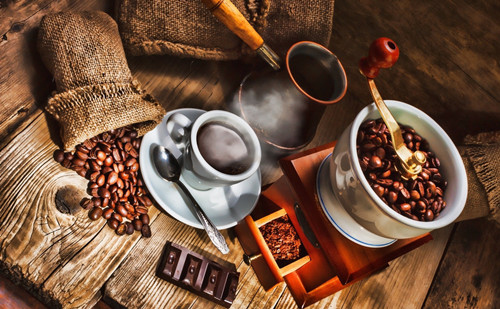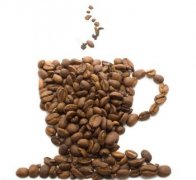Coffee Roaster Large Industrial Roaster

After the American Civil War, coffee beans sold in packaging on the display shelves of major cafe systems were first introduced. By the end of World War II, the mainstream commodity in the North American coffee market was pre-roasted beans / pre-ground coffee powder produced by large roasting plants, and this kind of high-volume roasting technology, which demands centralization and standardization, was called "coffee bean roasting plant" (Roasting Factory/Plant) or "commercial bean roaster" (Commercial Roaster). In the middle of the 19th century, large roasting plants in the late 19th century were just enlarged versions of bean roasters used in cafes, but at the end of the 19th century, the first "continuous bean roaster" (Continuous Roaster) was developed, which could roast coffee beans one batch after another without stopping.
1848: British industrial bean dryer
The large bean dryer in the picture is called "Dakin bean dryer". This is aimed at the improved type of American "Carter pull-out bean roaster" (Carter Pull-Out) introduced on page 35. The drum driving force of this bean roaster is the same as Carter's bean baking machine, which is driven by steam pulley, and the baking room is completely wrapped in a brick fireplace. But the Dakin bean roaster is different, the first is that there is a second layer of metal shell on the outside of the baking drum to block direct heat, and the second is that the "pull-out" design is more elegant and beautiful than the Yangchun design of the Carter bean baking machine.
1864: a small industrial bean dryer in the United States
Jabez Bures launched this continuous bean roaster with "double helix blades" (Double-screw) in the drum in 1864, which allows the coffee beans in the roasting drum to move forward and backward. This initiative not only makes the distribution of coffee beans inside the drum more uniform and stable, but more importantly, the next bean mouth is opened. It can also efficiently push the roasted coffee beans (the beans at the front of the drum) out of the mouth of the beans. In the 20th century, most drum baking machines used a design like this, which made the bean program faster. At this time, the outside of the baking drum is still covered by a brick fireplace, and the driving force is still steam.
End of 19th century: French bean dryer for gas and fire industry
The new coffee bean roasting technology, which uses gas as the heating source, was developed in the decades at the end of the 19th century. The lower bean mouth of the legal machine in the picture is located directly below the drum and the coffee beans are pulled by natural gravity into the cooling plate.
At the end of the 19th century: gas-fired continuous bean dryer in Germany
The Thurmer bean dryer developed in Germany in 1893 is probably the first gas-fired continuous bean dryer in the world. In the long baking drum, there is a set of spiral blade design, which can guide the coffee beans in roasting to move in an one-way way. when the coffee beans reach the end of the drum, they are already baked, so, in such a bean roaster, raw coffee beans can be continuously poured into for continuous baking. It is also a very practical design concept that this principle is applied to the "batch dryer" (Batch Roaster) and the bean dryers used in cafes in the past. The Thurmer bean roaster also introduced the concept of Fast Roasting (a batch within three to four minutes), which was immediately welcomed by large-scale baking companies, but so far, the quality of fast-baked coffee beans is still controversial.
End of the 20th century: continuous bean dryer (internal section)
The section view shows the latest continuous bean baking mechanism, which can see through the internal structure of the baking drum. The heat source of baking is provided by the strong heated air flow on the left side of the baking drum, which is blown to the right through the drum, and the baked caffeine beans are transported to the end of the drum and cooled by a stream of cold air and water mist. Today, however, more and more large continuous bean roasters use air flow baking, which is not far from the air flow roaster (Sivetz Shop Roaster) in the Siviz cafe introduced on page 55 (only a bit large): when a batch of coffee beans are roasted in hot air, they are sent to another tank for cooling. Then pour a new batch of raw coffee beans into the baking room to continue the next batch of baking process, repeating this cycle over and over again, so that it can be called "continuous baking".
Important Notice :
前街咖啡 FrontStreet Coffee has moved to new addredd:
FrontStreet Coffee Address: 315,Donghua East Road,GuangZhou
Tel:020 38364473
- Prev

Common sense of coffee roaster used in coffee shop
Coffee shop bean dryers, retail bean dryers, and small bean dryers are all medium to small bean dryers, which are often used in coffee shops during wartime. Before the early 20th century, most of their coffee beans were made by bean roasters in such cafes, as long as they were not baked at home, but by the early 1950s, large baking plants and pre-ground
- Next

The most basic factors that affect the taste of coffee from cinnamon baking to coke
The most important factor affecting the taste of coffee is roasting. In the case of the same raw coffee bean, at different degrees of baking, it may taste full of grass, or it may produce an empty baking flavor, either sour, bright, or dry; sometimes it will bake a full consistency, or taste delicious, round, bitter to sweet, or even
Related
- Beginners will see the "Coffee pull flower" guide!
- What is the difference between ice blog purified milk and ordinary milk coffee?
- Why is the Philippines the largest producer of crops in Liberia?
- For coffee extraction, should the fine powder be retained?
- How does extracted espresso fill pressed powder? How much strength does it take to press the powder?
- How to make jasmine cold extract coffee? Is the jasmine + latte good?
- Will this little toy really make the coffee taste better? How does Lily Drip affect coffee extraction?
- Will the action of slapping the filter cup also affect coffee extraction?
- What's the difference between powder-to-water ratio and powder-to-liquid ratio?
- What is the Ethiopian local species? What does it have to do with Heirloom native species?

